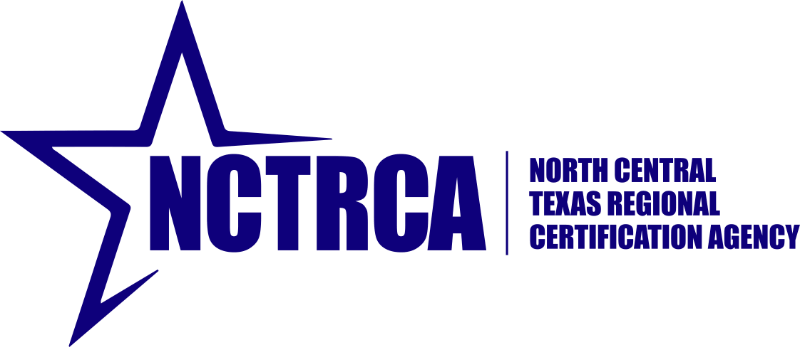What is ICF Core Competency 6 and Why is It Essential?
Understanding the foundation of ICF Core Competencies
The International Coaching Federation (ICF), revered for accrediting professional coaches and mentor coaching programs, has established a distinctive framework referred to as the ICF Core Competencies. This framework serves as the cornerstone for excellence in coaching, rigorously outlining the competencies that define and differentiate a standard coaching practice from an exemplary one. It is through these competencies that coaches are provided with a comprehensive toolkit, which is indispensable for engendering effective and sustainable change in their clients.
In a significant evolution of these standards, the ICF updated its competencies in 2021, showcasing a considerable development from the previous framework. The updated ICF Core Competencies shifted away from a focus on specific skills, such as asking powerful questions, and instead centered on broader competencies. This shift elevates the competencies to be more than just a checklist of skills; they become the very scaffolding upon which the art of coaching is built.
The essence of coaching, as envisioned by the International Coach Federation, is interwoven within these competencies, portraying a vision for a unified and robust coaching process. To truly master the craft of coaching, a professional must not only understand these competencies but must actively and skillfully integrate and exemplify them in their practice. Just as one cannot inhabit a foundation alone without the house it supports, similarly, a coach cannot rely solely on competencies without the practical application — the house — of coaching. The foundation is essential; it must be solid and reliable, but it is the structure of the house, the practical implementation of coaching methods and the impactful connection with the client, that creates a livable space. It is this structure that a coach builds upon the competencies’ foundation, shaping a practice that is both sound and transformative.
Imbibing these competencies into one’s coaching practice is akin to constructing a house upon a well-laid foundation — it is not enough to have a strong base, but without it, the structure of effective coaching cannot stand. Therefore, the ICF’s focus on competencies rather than discrete skills signifies a profound step towards providing coaches with a more focused and solid grounding for their craft, offering a clear path towards building a robust and effective coaching practice.
The critical role of ICF Coaching Competency 6 in coaching effectiveness
Competency 6, integral to the updated ICF Core Competencies of 2021, is fundamental in determining the efficacy of any coaching engagement. This update has seen the International Coach Federation underscore the import of a coach’s capacity to maintain presence and excel in the art of listening actively. It’s not merely about being physically present but rather about engendering a space of trust and connection, which is crucial for the scaffolding of a successful coaching relationship.
Listening actively, as characterized by Competency 6, is the bedrock of comprehending the multi-dimensional nature of the communication that takes place within a coaching session. It is the ability to hear not only the explicit narrative presented by the client but also the emotions, beliefs, and values that underpin it. Whether they hire an executive coach or a business coach, clients look for someone who can listen beyond the superficial layer, someone who can genuinely understand the complexities of their professional landscapes and personal aspirations.
There is a nuanced but significant distinction between the commonly described active listening and the ICF’s term listening actively. The latter delves deeper than the former, which is often associated with surface-level engagement like taking notes or uttering frequent verbal affirmations that can interrupt and distract from the true essence of the client’s message. Listening actively involves tuning into the client at level 2 and 3 listening; it is about perceiving the unspoken messages and the subtle cues that reveal the client’s inner experience. This level of listening transcends the literal words, creating a profound understanding of the client’s internal world, recognizing the energy shift, and fostering the clarity and understanding necessary to support the client’s journey effectively.
This deeper listening is a skill that transcends the act of hearing words — it is an engagement with the client’s narrative on an empathetic and intuitive level. For a coach, embodying this advanced listening skill is essential for facilitating a transformative coaching experience that respects and honors the client’s self-expression and supports the emergence of new learning and insights.
How actively listening impacts coach-client relationships
The act of listening, as embraced by a coach, extends far beyond the auditory process of hearing spoken words; it is an immersive engagement with the client’s verbal and non-verbal communication. Through listening actively, a coach steps into the client’s world, discerning not just the content of their speech but also the underlying messages conveyed through body language and non-verbal cues. This level of attuned listening affirms to the client that their story is heard and valued, thus cementing the foundation of trust that is vital to the coach-client relationship.
The ICF’s emphasis on listening actively as a core competency recognizes its profound impact on the coaching dynamic. It provides one of the rare sanctuaries where clients can decelerate, delve into deep reflection, and articulate thoughts they might not comfortably share with family, friends, or colleagues. Within the safe confines of the coaching space, clients can be vulnerable and open—a process facilitated by the coach’s attentive presence and skillful listening.
Embracing listening actively is about creating an environment where clients are encouraged to express themselves fully without apprehension—a place where the coach does not just listen, but hears and understands. Such intentional listening cultivates deeper connections and engagements, engendering significant and transformative exchanges. It is these connections that often serve as the conduit through which clients find the space to confront their challenges and explore their aspirations.
Incorporating this competency into the coaching relationship acknowledges the unique role the coaching session plays in a client’s life. By listening at a profound level and maintaining a focused presence, a coach can unlock the kind of meaningful dialogue that catalyzes introspection, growth, and change—ultimately contributing to the efficacy and success of the coaching outcomes.

Continue Learning with our ICF ACC Level 1 Coach Training Program
ICF core competencies form the foundation of powerful coaching.
Curious about building this strong foundation and embarking on the path to professional coaching?
Our ICF ACC Level 1 coach training program gives you the skills and credentials to excel.
How to Effectively Communicate and Actively Listen as a Coach – Techniques for improving active listening skills
Focused attention
To improve active listening skills as a coach, one must master the art of focused attention. This requires creating an environment free from distractions, signaling to the client through actions and demeanor that their words are of utmost importance. For example, a coach might turn off all notifications on devices, ensuring a quiet environment conducive to deep conversation. Additionally, they might adopt a method of centering themselves, such as taking deep breaths, to embody focused attention and set a tone of engagement for the session.
When it comes to the levels of listening, a coach must navigate between Level 2 (focused listening) and Level 3 (global listening). Level 2 is the capacity to hear and understand the client’s words while also capturing the essence and feelings behind those words, essentially focusing on the person and what the client is communicating. Level 3 expands this awareness outward, integrating not only the client’s words but also the environment, the coach’s own experiences, and the overall coaching relationship dynamics into a cohesive understanding. This global listening enables a coach to discern themes and patterns in the client’s behaviors and emotions across sessions, which can lead to richer, more impactful coaching conversations.
An effective technique to achieve Level 3 listening is to “defocus” in a way that allows for a broader perception of the client and the coaching environment. Just as squinting can bring certain visual elements into focus, a coach can practice a form of ‘mental squinting’ by not fixating too intently on the client’s words but rather opening up to the full context in which those words are spoken. This practice can help a coach gain a deeper understanding of what the client communicates, considering the client’s beliefs, emotions, and even the energy within the coaching space.
Through this comprehensive listening, a coach ensures they comprehend what is being communicated in the broader context, beyond the immediate dialogue. With this understanding, the coach can effectively summarize what the client communicated, ensuring that nothing is lost or misunderstood. This reflective action not only validates the client’s thoughts and feelings but also reinforces the coach’s commitment to communicating effectively and fostering a thorough understanding of the client’s experiences, ambitions, and the systems within which the client operates.
By employing these nuanced listening skills, a coach can better inquire into the client’s narrative, gather insights across sessions to discern themes and patterns, and enhance the overall coaching process. Master Certified Coaches (MCC) are particularly adept at this, often seamlessly transitioning between focused and global listening to create a dynamic that truly honors and explores the full spectrum of the client’s communication.
Hearing the client’s story
When a client shares their story, they are not only recounting events but weaving a narrative that includes their experiences, emotions, and perspectives. This narrative is multifaceted, consisting of the story the client tells and the story that truly unfolds beneath the surface. As coaches, our task is to listen beyond the narrated events, tuning into the deeper story that the client may not yet be aware of.
It is vital for a coach to understand what is being communicated, both in the explicit story and in the subtext. For example, when a client describes a fraught situation at work, the coach listens not just to the facts but to the emotions across sessions to discern underlying patterns and beliefs to enhance understanding. By focusing on this underlying story, coaches can tap into the client’s inner life skills and provide support that transcends the superficial narrative.
For a coach to truly grasp the context of the client’s systems, it’s essential to recognize the story being communicated in the context of the client’s environment and relationships. This understanding of the larger system helps in crafting interventions that are not only about the client’s individual growth but also how they interact within their broader networks. As the coach reflects or summarizes the client’s narrative, they bring to light unacknowledged aspects, often using their coaching tools to gently illuminate the true story that may be hidden behind daily recountings.
For instance, a Professional Certified Coach (PCC) might identify a recurring metaphor used by the client which reveals more about their perspective than they’ve consciously recognized. This metaphor might be a key to unlocking new insights and is a powerful example of how coaching tools such as metaphor and asking questions can be used in coaching to evoke deeper self-expression.
In doing so, a coach validates and supports the client’s self-expression, honoring their values and beliefs to enhance self-understanding. This approach allows the client to join the coach in a collaborative discovery process, wherein both can explore the deeper, often unspoken, narrative. In essence, the coach’s role is to provide a transcript of the client’s unarticulated inner story, assisting them in connecting the dots between their internal experiences and the external world.
By focusing on the deeper story, the coach empowers the client to confront and understand the non-verbal cues or other behaviors that shape their lived experience. Whether the coach is an MCC or a PCC coach, the commitment remains the same: to support the client in uncovering and articulating their inner narrative, thus enhancing their communication skills and facilitating meaningful change.
Listening for the client’s agenda
Active listening is a multi-layered skill that allows coaches to perceive the client’s explicit and implicit messages. It’s about hearing beyond the words and uncovering the client’s authentic agenda—their true aspirations, goals, and priorities. A coach’s role is not to project their own objectives onto the client but to discover and align with what the client truly wants to achieve.
For instance, when a client communicates a desire to improve their work-life balance, it’s the coach’s responsibility to ensure that they fully understand the depth and implications of this desire within the context of the client systems. This means exploring not only the surface-level struggles the client faces but also the systemic influences and personal values that drive the need for change. The coach approaches this exploration with the core competency model in mind, utilizing ICF competencies to structure the conversation in a way that supports client self-expression and self-discovery.
As part of this process, the coach might check in with the client to confirm that improving work-life balance is indeed their primary focus at this time. This is key to fostering a true client partnership. By engaging the client in affirming their agenda, the coach ensures that the client is indeed driving the coaching process, rather than simply going along with the coach’s assessment or assumptions.
In aligning with the ICF competencies, the coach leverages their understanding of the context of the client systems to support the client’s journey effectively. This includes recognizing how various aspects of the client’s life—personal, professional, and social—interact and influence each other. It is by acknowledging and working within these interconnected systems that the coach can help the client navigate their challenges and opportunities in a holistic and integrated manner.
As the coach listens for and supports the client’s agenda, they invariably draw upon their inner life skills, those inherent qualities and abilities that enable them to tune into and empathize with the client’s experiences. Whether they are a professional or a master coach, the objective remains the same: to create a supportive environment where the client feels heard, understood, and empowered to articulate their needs and navigate their path forward.
By employing these listening strategies and honoring the client’s agenda, a coach can effectively support their client’s journey to realization and growth, helping them to articulate and pursue their true priorities and aspirations within the intricate web of
Distinguishing between words, tone of voice, and body language
Truly understanding a client’s communication involves a nuanced approach that transcends the verbal aspect. It requires a coach to be sensitive not just to what is said, but how it is said—the tone of voice, the pace of speech, and the accompanying body language, all of which offer rich layers of meaning. Effective coaches are vigilant observers who can detect subtle cues, such as an incongruous sigh following a claim of contentment, or a slumped posture when achievements are discussed. These observations may point to a disparity between the client’s interior experience and their outward expression, signaling areas ripe for deeper exploration.

Discover ICF PCC and ICF ACTC Team Coaching Competencies and Mastery
Are you eager to magnify the impact of your coaching practice?
Our ICF Team Competencies program offers a seamless transition for those who have mastered the core competencies, allowing you to delve deeper into the complexities and rewards of team coaching.
Explore this opportunity today.
In the practice of listening at Level 2, a coach attentively notices these signals without attaching interpretation or judgment to them. It’s about presenting their observations back to the client, allowing the client to reflect and assign significance to their own emotions and behaviors. For instance, if a coach notices their client’s tone flattens when discussing a supposedly exciting opportunity, they might say, “I noticed a change in your voice when you talked about the new project. What does that bring up for you?” This reflective inquiry invites the client to explore their own reactions and provides them with the autonomy to interpret their feelings and decide on a course of action.
This technique of mirroring the client’s non-verbal cues or other behaviors ensures the client communicated to ensure their message is received in its entirety, with all its inherent complexities. It is about creating an opportunity for the client to gain a deeper understanding of what they are communicating and potentially uncover discrepancies between their internal state and external communication.
By skillfully distinguishing between the words, tone of voice, and body language, a coach can assist the client in recognizing and integrating these insights into a coherent self-understanding. This process not only validates the client’s experience but also enriches the coaching conversation, fostering a more profound level of client self-expression and self-awareness.
Summarizing and paraphrasing
The practice of summarizing and paraphrasing by a coach is pivotal in ensuring a shared understanding and helping the client to achieve clarity. By concisely restating the client’s key points and emotions using their own interpretive lens, a coach demonstrates their grasp of the client’s message and opens the door for any necessary realignment of understanding. This process goes beyond mere repetition and involves active interpretation and reflection, signaling to the client that their message has been thoughtfully considered.
For instance, after actively listening to a client express concern over mounting work pressures, a coach might offer a summary that captures the essence of what has been communicated: “It seems like there is a sense of urgency and pressure coming through when you talk about work.” This form of paraphrasing focuses on the emotional undertone of the client’s words rather than simply echoing what was said. It conveys to the client that the coach is listening at level 2 and 3—engaging with the emotions and broader implications of their story, which may prompt further introspection from the client.
When a coach reflects on what the client has communicated in this way, it can guide the client toward a deeper exploration of their own feelings. A question such as “What I am sensing is an emotional charge associated with this topic, would you like to explore what might be driving this?” encourages the client to look beyond the surface and delve into the complex emotions underlying their initial communication.
Through skillful summarizing and paraphrasing, a coach can navigate the conversation towards a space where the client feels understood, supported, and motivated to unpack their experiences further. This technique is not about reciting a transcript of the conversation but rather about engaging with and reflecting the client’s communicated experiences, thereby fostering a connection that enriches the coaching relationship.
Encouraging, accepting, exploring, and reinforcing the client’s expression
A coach’s endeavor is to foster an environment where the client’s self-expression is not only safe but also deeply encouraged. In this space, feelings, perceptions, concerns, beliefs, and even off-the-cuff suggestions are met with an open mind and heart, free from judgment or evaluation. The coach’s role is not to arbitrate the validity of these expressions, but to encourage clients to explore more profoundly, to dig beneath the surface, and to arrive at their own conclusions and realizations.
For example, when a client shares a controversial perspective or emotional concern, the coach might respond with, “That sounds like it’s really important to you. Tell me more about what’s behind that feeling.” Such a response honors the client’s viewpoint and prompts further introspection. The coach doesn’t seek to validate nor invalidate the client’s feelings, but instead, supports the client in examining the roots and ramifications of their thoughts and emotions.
This approach promotes exploration and reinforces the client’s ability to tap into their agency and autonomy. As clients articulate and sift through their innermost thoughts and emotional responses, they often discover their own solutions, strengths, and paths forward. Coaches, through their unwavering acceptance and adept facilitation of this process, enable clients to build confidence in their judgments and decisions, thus nurturing their self-efficacy.
Integrating the client’s words, tone of voice, and body language to determine the full meaning of their communication
Integration is at the heart of understanding and interpreting the full depth of the client’s communication. A coach synthesizes the verbal expressions, the nuanced variations in tone, and the rich tapestry of body language to construct a comprehensive picture of the client’s message. This synthesis involves weaving together these separate strands to reveal insights that may not be evident when considering each element in isolation.
For instance, when a client discusses a decision, their words may express certainty, but their hesitant tone and closed body posture might tell a different story. A coach, through integration, can gently bring these observations to light without drawing their own conclusions. They might say, “I notice that while you speak of your choice with certainty, there is a tension in your voice and your arms are crossed. How do these pieces fit together for you?” This approach lays out the observations and invites the client to consider the congruence of their full communication.
The coach’s role is to articulate these integrated observations clearly and objectively, laying it all at the client’s feet, so to speak. This presentation of integrated communication allows the client to see themselves more clearly and ponder what is truly possible now that the entirety of their expression has been laid out before them. The coach resists the urge to make assumptions or take action based on these insights. Instead, they serve as a mirror, reflecting the full spectrum of the client’s communication back to them, enabling the client to take ownership of their self-discovery and subsequent choices.
Allowing the client to vent or “clear” their situation without judgment or attachment
Creating a nonjudgmental and supportive space is a crucial aspect of coaching, one where clients feel they can freely vent or “clear” their thoughts and emotions related to specific situations. During these moments, the coach’s responsibility is to maintain a stance of neutrality and empathy, offering a safe haven for the client to express themselves without fear of judgment or reproach.
A coach must recognize the cathartic value of venting while staying within the parameters of the coaching role, which does not include the provision of healing or therapeutic services as defined by mental health professionals. It is about holding space for the client’s emotions and allowing them to process these feelings in a way that can lead to greater clarity and forward movement.
For instance, when a client experiences frustration with a team member, the coach can facilitate a dialogue where the client is encouraged to express their raw emotions. The coach might say, “It sounds like you’re holding a lot of tension around this interaction. Would you like to talk more about what you’re feeling?” This approach provides the client with the opportunity to unpack their emotions, perhaps leading to insights about their own reaction patterns or interpersonal dynamics.

Enjoyed our insights on professional coaching? We’re just scratching the surface. Dive deeper into the world of transformative coaching with our exclusive offer. Sign up now to receive our FREE brochure: “Our Twelve Favorite Coaching Questions”—a curated collection of powerful questions designed to unlock potential, foster growth, and inspire action.
"*" indicates required fields
Such moments can become turning points for clients. The simple act of verbalizing frustrations can sometimes help dissipate the intensity of their feelings and pave the way for solution-focused thinking. As coaches, we enable clients to navigate through their emotional landscapes, providing a space where the expression of emotion can be viewed as an essential step towards personal growth and problem-solving.
Noticing, acknowledging, and exploring the client’s strengths and resources
In the rhythm of active listening, a coach’s attentiveness is not confined to the identification of obstacles; it encompasses a broader perspective that includes noticing and accentuating the client’s strengths, accomplishments, and resources. It is vital to bring these positive aspects into the coaching conversation, as individuals often rush from one objective to the next without pausing to recognize their successes and the capabilities they demonstrated in achieving them.
The role of the coach, then, becomes one of illuminating these achievements and the inherent skills that made them possible. For example, a coach can acknowledge a client’s resilience in navigating a complex project or their creativity in resolving conflicts. They might say, “I’ve noticed how resourceful you’ve been in these situations, managing to find solutions where others might not. How might these strengths support you in your upcoming goals?” This inquiry not only affirms the client’s abilities but also encourages self-reflection on how these attributes can be applied to future endeavors.
By actively contributing to the pool of shared understanding in this way, a coach highlights areas of potential that the client may not have fully appreciated, point out client systems and to support client in their abilities to tap into those. Clients can derive immense value from these insights, as the acknowledgment of their strengths bolsters self-confidence and provides a clearer vision of the resources at their disposal for overcoming challenges and reaching further goals.
This aspect of the coaching dialogue invites clients to slow down and consider their journey—not just where they are going, but how far they have come and the wealth of strengths they possess. Such recognition can inspire a renewed sense of purpose and motivation, as well as a deeper appreciation of one’s personal growth and achievements.
Noticing themes, patterns, and connections in the client’s narrative
In the hustle of everyday life, it’s common for clients to move swiftly from one task to another, often missing the opportunity to pause and reflect on recurring themes and patterns in their behaviors and interactions. As a coach, one of the most valuable contributions is to employ engaged neutrality, actively listening to draw out these patterns and themes, and bringing them to the client’s awareness in a nonjudgmental way.
By mastering the art of listening and observation, a coach might discern certain cycles or repeated outcomes in the client’s stories. With insightful neutrality, they can bring these observations forward, prompting client self-reflection. A coach might say, “I’m noticing a pattern in these interactions that seems to lead to a similar outcome. What are your thoughts on this?” This approach enriches the pool of shared understanding, providing significant value to the client.
The coach’s role is not to prescribe solutions or pass judgment but to serve as a mirror, reflecting back the client’s own experiences in a way that allows the client to recognize the significance of these patterns themselves. By highlighting these themes, the coach enables the client to consider whether these are areas they wish to change, leverage as strengths, or explore further.
This reflective process can be a powerful force for change. It can help clients to step back and analyze the deeper implications of their repeated behaviors, enhancing their self-awareness and offering a clearer perspective on potential growth areas. In these moments of revelation, clients can decide on the best course of action, empowered by their newfound understanding and the supportive guidance of their coach.
Asking open-ended questions that evoke discovery, insight, commitment, or action
The strategic use of open-ended questions in coaching is a critical tool for eliciting deeper reflection and promoting self-discovery. While closed-ended questions have their place and can be effective in certain contexts, open-ended questions open the door to expansive thinking and introspection, leading clients to uncover insights and arrive at conclusions that resonate deeply with their personal experiences and goals.
Crafting questions that encourage clients to explore their thoughts, feelings, and beliefs helps them articulate their visions and challenges in a way that closed-ended questions may not. An open-ended approach might involve inquiries that begin with ‘what’, ‘how’, or ‘why’, inviting clients to provide more detailed responses. For example, rather than asking, “Are you satisfied with your progress?” a coach might ask, “What does satisfaction look like to you in the context of your progress?” This type of question encourages the client to define their criteria for satisfaction and reflect on their journey from a broader perspective.
By facilitating a conversation that moves beyond yes-or-no answers, coaches guide clients toward richer, more in-depth dialogue. This can help clients articulate their internal motivations, confront their hesitations, and ultimately, propel them towards making well-considered commitments or taking decisive action. The true power of open-ended questions lies in their ability to act as a catalyst for the client’s own inner process of exploration and decision-making.
Allowing silence, pause, or reflection
Embracing silence is one of the most understated yet powerful aspects of coaching. In a society where silence is often perceived as awkward or uncomfortable, a coach’s ability to maintain and value silence can be transformative. Silence in coaching sessions provides a precious pause, a respite where clients can engage in reflection, allowing their thoughts and emotions to settle and crystallize into insights.
Coaches should not only be comfortable with the client’s silence but also with their own. It’s during these quiet intervals that clients do some of their most profound thinking. Meanwhile, the coach can use the space to process the conversation thus far, to integrate information, and to formulate impactful, context-driven queries. A well-timed pause followed by a thoughtful question can shift the direction of the coaching conversation and unlock new levels of understanding.
The American cultural backdrop often places a premium on constant communication and quick responses, which can make silence in conversations feel unfamiliar or even disconcerting. Yet, in the context of coaching, silence is not an absence of communication but an active component of it. It signifies a moment of contemplation, where coach and client alike can deepen their engagement with the subject matter at hand.
By fostering a coaching atmosphere where silence is not only accepted but encouraged, coaches demonstrate to clients that deep thought and reflection are valued parts of the growth process. This comfort with silence is a testament to the coach’s patience and understanding, and it invites the client into a space where they can explore the full spectrum of their own internal dialogue.
The Impact of Active Listening on Coaching Outcomes
How active listening facilitates clarity and understanding
A coach’s ability to actively listen has a direct impact on the level of clarity and understanding achieved during a coaching session. When a coach summarizes what the client has communicated and reflects on the client’s words, it ensures that both parties have a shared understanding of the conversation’s content. This shared understanding is crucial for setting goals and planning actions that are reflective of the client’s true desires and challenges.
Active listening contributes to building a robust coaching relationship — one where the coach is viewed not just as a mentor, but as a trusted confidant. This trust is what allows the client to delve into deeper, sometimes unexplored, areas of their life, leading to significant transformations.
Identifying themes and patterns through listening
One of the reasons active listening is so powerful is its ability to uncover themes and patterns in the client’s thoughts, beliefs, and actions. By noticing these recurring elements, a coach can help the client become aware of previously unconscious habits or thought patterns that may be influencing their behavior.
This awareness often acts as a catalyst for change, empowering the client to make more conscious choices about their actions and responses. The ability to actively listen and identify these patterns is a hallmark of a coach proficient in the ICF’s updated core competencies.
Noticing shifts in energy and emotions across sessions
Throughout the coaching engagement, clients will experience various shifts in their energy and emotional state — it is the coach’s role to notice and understand these changes. By observing and acknowledging these shifts, the coach can adjust their approach and explore the underlying reasons for these emotional fluctuations.
Noticing trends in the client’s emotional landscape across sessions provides valuable insights that can guide the coaching process and support the client’s growth. It requires the coach to be intuitive and responsive, adapting their methods and conversations to align with the client’s evolving needs.
Implementing Competency 6: Practical Tips for Coaches
Summarizing and paraphrasing to ensure understanding
One practical tip for coaches looking to implement Competency 6 is to regularly summarize what the client is saying to fully understand and validate the client’s message. This habit not only confirms the coach’s understanding but also reinforces for the client that they are being heard and understood.
By practicing summarizing and paraphrasing, coaches can also check in with the client to see if there is additional information they wish to add or clarify. This process often leads to a deeper exploration of the topic at hand and can uncover new aspects of the client’s perspective.
Exploring the client’s emotions to deepen the coaching impact
An essential component of actively listening as a coach is to acknowledge and explore the client’s emotions. This exploration allows the coach to support the client in understanding their feelings and how these emotions might be affecting their decisions and actions.
When a coach empathetically explores the client’s emotions, it signals to the client that their feelings are valid and important. It also encourages the client to consider how their emotional responses play into their broader goals and life choices.
Acknowledging the client’s self-expression
Acknowledging and supporting the client’s self-expression is crucial to actively listening and an integral part of the coaching relationship. Coaches should always encourage clients to express themselves freely and authentically, without fear of judgment or criticism.
By fostering an environment where self-expression is valued, coaches help clients to strengthen their voice and develop a greater sense of agency in their lives. This aspect of coaching is vital for helping clients to build confidence and take ownership of their personal and professional growth.
Navigating Challenges in Actively Listening
Overcoming common obstacles to active listening
Active listening in coaching can be challenging, and coaches must be aware of their tendencies that may hinder this process. Common challenges include becoming distracted, forming judgments, or thinking ahead to the next question rather than focusing on what the client is saying.
To overcome these obstacles, coaches must actively practice becoming more present and mindfully attentive. Techniques such as conscious breathing or grounding exercises can help coaches center themselves before and during coaching sessions.
Strategies for staying present and attentive
Staying present and attentive as a coach involves deliberate effort and commitment. Coaches can employ mindfulness practices or establish pre-session routines that help them transition into a focused state, ready to listen fully to their clients.
It’s important for coaches to maintain an attitude of curiosity and openness, letting go of preconceived notions and truly listening to the client’s story as it unfolds. This allows the coach to stay aligned with the client’s needs and adapt their approach in real-time.
Adjusting techniques for virtual coaching environments
With the growing prevalence of virtual coaching sessions, coaches must adapt their listening skills to suit digital communication. This might mean developing a heightened sensitivity to verbal cues and learning to read non-verbal cues through a screen.
Virtual coaching requires the coach to pay close attention to the client’s tone of voice and body language even when they are not in the same physical space. It also requires being prepared to manage technological challenges while maintaining the quality of the coaching conversation.
The Evolution of ICF Core Competency 6
Changes in the updated ICF Core Competencies
The 2021 update of the ICF Core Competencies reflects both the growth of the coaching profession and the ongoing commitment of the International Coach Federation to uphold the highest standards in coaching. Within this update, Competency 6 received particular attention to emphasize the critical nature of maintaining presence and active listening within the coaching process.
The updated ICF Core Competencies ensure that coaches are equipped with the most current and effective tools and strategies. They encourage coaches to actively engage in professional development opportunities to refine their competencies in alignment with the latest industry standards.
The importance of staying updated with coaching practices
For coaches to provide exceptional service and support to their clients, staying informed about the latest coaching practices and changes in the ICF Core Competencies is imperative. Being up-to-date signifies a coach’s dedication to their craft and their commitment to offering the highest quality of coaching to their clients.
Engagement with updated coaching practices and competencies not only benefits clients but also contributes positively to the coaching profession by elevating overall standards and promoting best practices.
How the updated competencies enhance coaching effectiveness
The updated ICF Core Competencies serve as a blueprint for improving coaching effectiveness. These refinements provide clearer guidelines and practices for coaches to follow, which in turn can deepen the impact of coaching engagements.
The emphasis on active listening within the updated competencies highlights the importance of this skill in fostering meaningful client transformations. It signals the ICF’s recognition of the profound effect a coach’s presence and attentiveness can have on client outcomes, and how these elements are essential for a successful coaching relationship.

Unlock Your Coaching Potential with Tandem!
Dive into the essence of effective coaching with our exclusive brochure, meticulously crafted to help you master the ICF Core Coaching Competencies.
"*" indicates required fields
About the Author
Cherie Silas, MCC
She has over 20 years of experience as a corporate leader and uses that background to partner with business executives and their leadership teams to identify and solve their most challenging people, process, and business problems in measurable ways.















